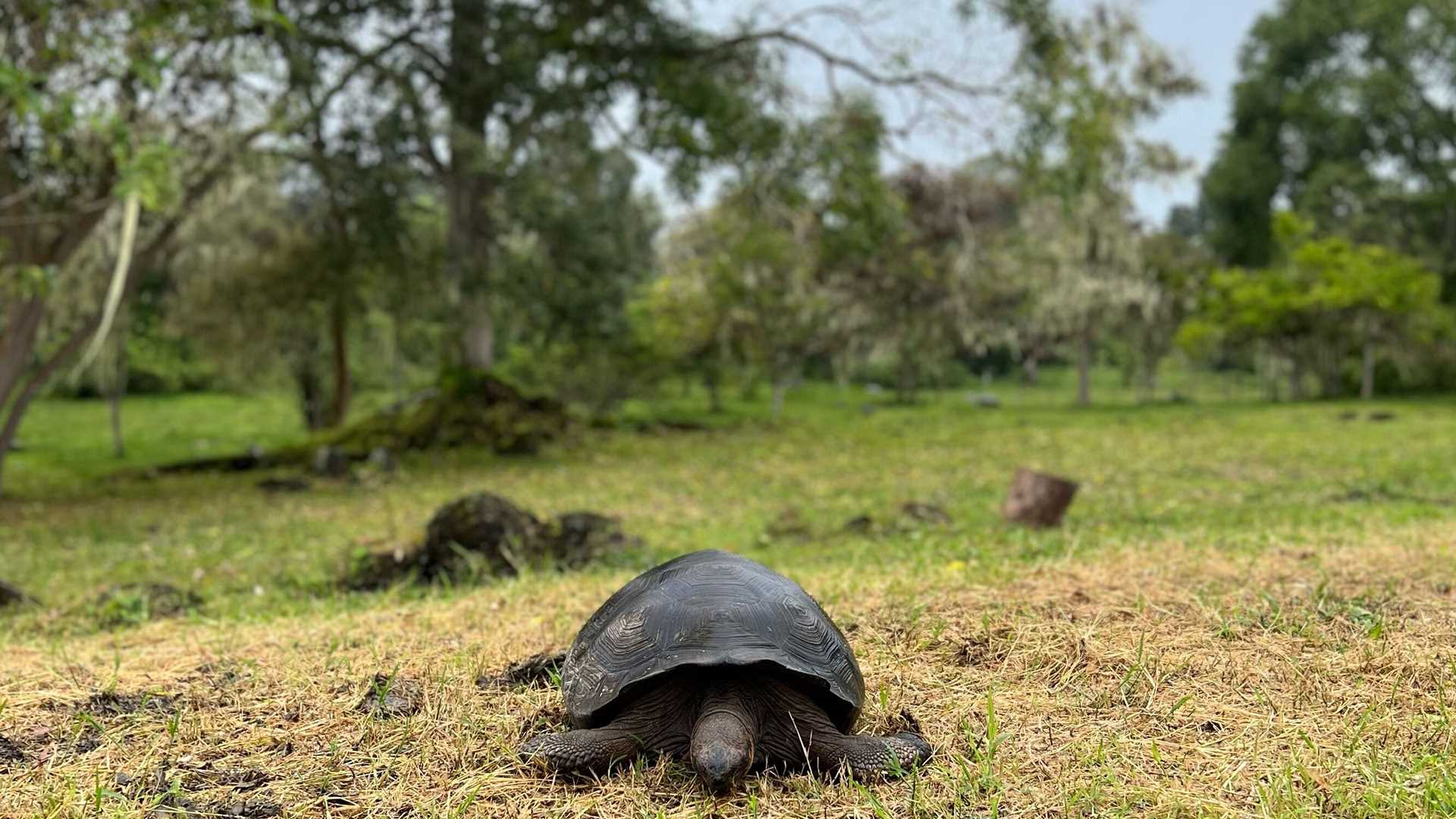Guests of National Geographic Endeavour II spent the day exploring Santa Cruz Island. We kicked off the day with a visit to the Charles Darwin Research Station. At the station, we learned about some of the projects taking place. The Charles Darwin Research Station is a magnet for investigators from around the world. Scientists are studying a vast array of ecological and anthropogenic areas including: the evolutionary histories of iconic species, invasive species management, and education and outreach for human communities. The giant tortoise captive breeding program was the highlight. Guests learned how the Charles Darwin Research Station and the Galapagos National Park Service are working to replenish decimated populations of these iconic creatures. We visited the Lonesome George Exhibit and discussed the realities of human impacts on the environment.
After our visit to the research station, we enjoyed refreshments and artisanal chocolates at Chocogalapagos. We walked along the boardwalk and visited the fishermen’s pier, where we caught a glimpse of what life is like on the island. We boarded buses and made our way to the highlands, where we visited the Trapiche farm. At Trapiche, guests had the opportunity to learn how this small, family-run farm produces delicious products, such as coffee and sugarcane rum. Some guests even participated in the activities!
After our visit to the Trapiche farm, we made our way to the Manzanillo Ranch, where we enjoyed a delicious lunch. After eating, we roamed around the farm in search of giant tortoises. We did not have to look far! There were dozens of Santa Cruz giant tortoises. We discussed the evolutionary history of these incredible animals. Giant tortoises are considered eco-engineers. This refers to the ways in which they alter their natural environment simply by virtue of their natural history. They are the cultivators of Galapagos; as megaherbivores, they graze on their favorite plants and drop the seeds in perfect little packages of fertilizer, ready to grow. Consequently, when we look around the farm, we observe all the giant tortoises’ favorite foods. The tortoises also form large ponds; after rainfall accumulates, giant tortoises begin to congregate and kick up the sediments. Eventually, this congregation and the disturbances form watering holes. There are somewhere between 8,000–10,000 giant tortoises on Santa Cruz Island, making this island home to a significant proportion of the entire population the Galapagos.
Photo caption and photographer: A Santa Cruz giant tortoise grazes at Manzanillo Ranch. These reptiles play an incredibly important role as megaherbivores in the Galapagos. We are so lucky to have the opportunity to observe them up close. Photo by Alexandra Widman







